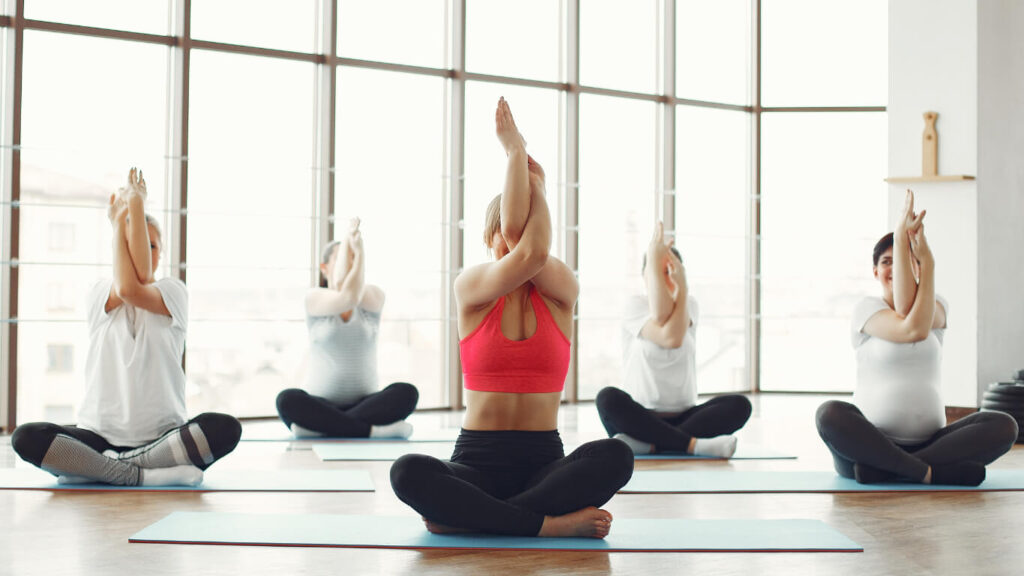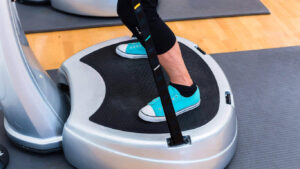Yoga for Lymphedema: Enhancing Lymphatic Drainage and Well-Being
Lymphedema affects millions of people worldwide, yet many are unaware of the powerful benefits that yoga can provide in managing its symptoms. In this blog, I’ll explain how yoga can support lymphatic circulation, reduce swelling, and improve the overall quality of life for individuals with this condition. Whether you’re new to yoga or a seasoned practitioner, there’s something here for everyone.
Key Takeaways
- Yoga for lymphedema is a safe, effective way to promote lymphatic drainage and enhance well-being.
- Certain yoga poses, breathing exercises, and sequences can stimulate the lymphatic system and reduce swelling.
- Pairing yoga with traditional lymphedema treatments, like compression garments, boosts effectiveness.
- Consistency is key: regular yoga can complement other therapies and support long-term lymphedema management.
What is Lymphedema and How Can Yoga Help?
Understanding Lymphedema and Its Symptoms
Lymphedema occurs when the lymphatic system becomes damaged or blocked, causing a buildup of lymphatic fluid in tissues. This can lead to swelling, heaviness, and discomfort, commonly in the arms or legs. It may result from damage to the lymphatic system due to surgery, radiation, or infection, or it may be primary lymphedema, a hereditary condition. The symptoms of lymphedema may include:
- Swelling in the affected limb
- Reduced range of motion
- Recurring infections
- Hardening or thickening of the skin
The Role of Yoga in Lymphatic Drainage
Yoga can help individuals with lymphedema by gently encouraging lymphatic flow and reducing swelling. This ancient practice stimulates lymph vessels through specific yoga postures and breathing exercises, aiding in lymph drainage throughout the body. Unlike other physical activities, yoga is low-impact and adaptable, making it suitable for lymphedema patients.
What Are the Benefits of Practicing Yoga for Lymphedema?
Enhancing Lymph Flow and Reducing Swelling
The benefits of yoga for lymphatic circulation are profound. You encourage lymph flow through lymph nodes and vessels by practicing gentle yoga, rhythmic movement, and deep breathing exercises, reducing fluid buildup. Regular yoga practice may help prevent lymphedema because it encourages lymphatic movement and keeps the body active.
Improving Quality of Life for Lymphedema Patients
Living with lymphedema can be challenging, but incorporating yoga into your routine can significantly improve your quality of life. Many forms of yoga focus on mindfulness and stress reduction, which can alleviate emotional distress and promote better sleep. These effects of yoga also help to increase overall well-being.
Complementing Conventional Lymphedema Treatments
Yoga provides a complementary approach to lymphedema treatment. Combined with therapies like manual lymph drainage and wearing a compression garment, yoga enhances results. Studies have shown that patients with lymphedema who integrate yoga into their care experience better outcomes.
Which Yoga Poses Are Most Effective for Managing Lymphedema?
Gentle Yoga Postures for Lymphatic Drainage
Certain yoga poses for lymphedema are particularly effective in promoting lymphatic flow:
- Elevated legs up the wall: This relaxing posture encourages peripheral lymph drainage and reduces swelling.
- Cat-cow stretch: Helps stimulate the movement of lymphatic fluid through the torso.
- Seated twist: Promotes detoxification and lymph drainage in the abdominal area.
Breathing Exercises to Stimulate Lymph Flow
Deep, intentional yoga breathing exercises are vital for stimulating lymphatic circulation. Techniques like diaphragmatic breathing create gentle pressure changes within the body, helping to move lymph through its pathways. Regularly practicing yoga breathing enhances the body’s natural detox processes.
Yoga Sequences Tailored for Lymphedema Relief
A structured yoga sequence for lymphedema relief focuses on gradual, mindful movements that engage the entire lymphatic system. Such sequences often depend on the yoga therapist, who tailors routines to suit individual needs.
How Can Yoga Help with Breast Cancer-Related Lymphedema?
Addressing Upper Body Lymphedema Through Yoga
Breast cancer-related lymphedema often affects the arms and chest. Specific yoga exercises, such as gentle arm stretches and chest openers, can alleviate swelling and discomfort. These yoga protocols aim to restore mobility and stimulate lymphatic flow in the upper body.
Yoga as a Complementary Therapy for Breast Cancer Survivors
For individuals treated for breast cancer, yoga offers both physical and emotional benefits. Incorporating yoga into post-treatment care supports lymphedema management and enhances overall recovery. Yoga for cancer survivors fosters resilience, strength, and peace of mind.
Reducing Lymphedema Risk with Regular Yoga Practice
Consistent yoga practice may help prevent lymphedema in breast cancer survivors by keeping the body active and encouraging healthy circulation. Gentle movements and breathing exercises ensure the lymphatic system remains supported.
What Precautions Should Be Taken When Practicing Yoga for Lymphedema?
Guidelines for Safe Yoga Practice with Lymphedema
When practicing yoga for lymphedema, it’s essential to follow these guidelines:
- Avoid poses that place excessive pressure on affected limbs.
- Use props to modify challenging postures.
- Listen to your body and stop if discomfort arises.
Working with a Specialized Yoga Therapist
A qualified yoga therapist can provide personalized guidance to ensure safe and effective practice. Yoga therapists coached lymphedema patients often achieve better results due to the tailored nature of their routines.
Combining Yoga with Compression Garments
Wearing a compression garment during yoga sessions can enhance the benefits by providing consistent support to affected areas. This combination helps maintain lymphatic flow while allowing movement.
How Often Should Yoga Be Practiced for Lymphedema Management?
Developing a Consistent Yoga Routine
To experience yoga’s full effects, it’s important to develop a regular routine. Aim for 3-5 sessions per week, incorporating a mix of gentle yoga postures, breathing exercises, and relaxation techniques.
Integrating Yoga into Daily Lymphedema Care
Making yoga a part of your daily self-care can significantly enhance its benefits. Simple stretches, mindfulness practices, and a dedicated yoga program support the ongoing lymphedema management.
Can Yoga Replace Traditional Lymphedema Treatments?
Yoga as a Complementary Approach to Lymphedema Management
While yoga provides immense benefits, it should be viewed as a complementary therapy rather than a replacement for traditional treatments. Pairing yoga with therapies like manual lymph drainage ensures a holistic approach.
Combining Yoga with Manual Lymph Drainage and Other Therapies
When practiced alongside lymphedema treatments, yoga enhances overall effectiveness. The combination allows lymph to drain efficiently, improving outcomes for those managing this condition.
FAQs About Yoga for Lymphedema
Can hot yoga help with lymphedema?
Hot yoga is generally not recommended for lymphedema patients, as excessive heat can worsen swelling.
Are there standing yoga poses suitable for lymphedema?
Standing yoga poses like Warrior II can be modified to stimulate lymphatic circulation gently.
What types of yoga are best for lymphedema?
Gentle, restorative, and vinyasa yoga with modifications are ideal for those with lymphedema.
Is yoga effective for lymphatic filariasis patients?
Yoga has been found to improve the quality of life of lymphatic filariasis patients, especially in endemic regions.
Yoga is a powerful tool for managing lymphedema. By incorporating it into your daily routine and working closely with a yoga therapist, you can enjoy improved well-being and quality of life. Remember, small, consistent steps make all the difference!





